- Administrator
- Albums and Singles
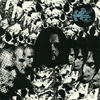 Pharaoh Overlord is the so-called "stonerrock" side project of legendary Finnish post-rockers Circle. With theirthree albums thus far - #1, #2 and a live album called Battle of the Axehammer- Janne, Tomi and Jussi have indulged their penchant for progressivepsych-rock that had previously only been hinted at in their work asCircle. Where those previous albums were notable for their hypnoticguitar riffs and the frequently caustic wall of feedback and reverb ala Acid Mothers Temple, this new full-length is marked by its relativetameness (except for "Autobahn," which I'll get to later). Instead ofblistering electric solos, the album emphasizes the trancelike rhythmsection, creating a series of propulsive motorik jams that enforce theprimacy of rhythm, structure and the infinite beat. Tomi Leppanen'smesmerizing drumming is highlighted on this album, the inheritor of atribalistic simplicity first honed in on by Jaki Liebezeit. Tomi'sincredibly drums form a complex counterpoint relationship to Jussi'svirtuosic bass and Janne's subtle, dynamic guitar melodies. In manyways, this album is the closest that Pharaoh Overlord have gotten tothe sound of their other project Circle, creating a post-rockamalgamation that traces its evolution back to Neu! and Kraan ratherthan Tortoise or GY!BE. Rather than partake in a lot of showboatingstylistic shifts or wanky guitar solos, Pharaoh Overlord insteadconcentrate on a group sound, building an unstoppable forward momentumwith the canny (and Can-y) use of extreme repetition. "Test Flight" and"Blackout" are both outstandingly trippy and trancey, but both exerciserestraint to such a degree that when a fuzzy, third-eye guitar solobursts forth into the mix, it creates an adrenaline rush of sound.Quiet restraint and focus are pretty much the watchwords of #3,until the 13-minute polyrhythmic excursion of "Laivaus 17" gives way to"Autobahn," which switches gears and brings the album to a grindinghalt, a ten-minute wallow in the sort of metallic grind, subharmonicbass frequencies and crawling doom made infamous lately by Sunn O))),Boris and their various copyists. It's an odd stopgap in an album thatis otherwise bright and energetic, full of precision, dynamism andsparkling production. Where Pharaoh Overlord shine is on tracks like"Octagon," when the seemingly effortless creation of rotating,interlocking concentric circles of rhythm and melody resembles TerryRiley or Steve Reich's rhythmic explorations, with a newfound sense ofstoned bliss and psychedelic awe.
Pharaoh Overlord is the so-called "stonerrock" side project of legendary Finnish post-rockers Circle. With theirthree albums thus far - #1, #2 and a live album called Battle of the Axehammer- Janne, Tomi and Jussi have indulged their penchant for progressivepsych-rock that had previously only been hinted at in their work asCircle. Where those previous albums were notable for their hypnoticguitar riffs and the frequently caustic wall of feedback and reverb ala Acid Mothers Temple, this new full-length is marked by its relativetameness (except for "Autobahn," which I'll get to later). Instead ofblistering electric solos, the album emphasizes the trancelike rhythmsection, creating a series of propulsive motorik jams that enforce theprimacy of rhythm, structure and the infinite beat. Tomi Leppanen'smesmerizing drumming is highlighted on this album, the inheritor of atribalistic simplicity first honed in on by Jaki Liebezeit. Tomi'sincredibly drums form a complex counterpoint relationship to Jussi'svirtuosic bass and Janne's subtle, dynamic guitar melodies. In manyways, this album is the closest that Pharaoh Overlord have gotten tothe sound of their other project Circle, creating a post-rockamalgamation that traces its evolution back to Neu! and Kraan ratherthan Tortoise or GY!BE. Rather than partake in a lot of showboatingstylistic shifts or wanky guitar solos, Pharaoh Overlord insteadconcentrate on a group sound, building an unstoppable forward momentumwith the canny (and Can-y) use of extreme repetition. "Test Flight" and"Blackout" are both outstandingly trippy and trancey, but both exerciserestraint to such a degree that when a fuzzy, third-eye guitar solobursts forth into the mix, it creates an adrenaline rush of sound.Quiet restraint and focus are pretty much the watchwords of #3,until the 13-minute polyrhythmic excursion of "Laivaus 17" gives way to"Autobahn," which switches gears and brings the album to a grindinghalt, a ten-minute wallow in the sort of metallic grind, subharmonicbass frequencies and crawling doom made infamous lately by Sunn O))),Boris and their various copyists. It's an odd stopgap in an album thatis otherwise bright and energetic, full of precision, dynamism andsparkling production. Where Pharaoh Overlord shine is on tracks like"Octagon," when the seemingly effortless creation of rotating,interlocking concentric circles of rhythm and melody resembles TerryRiley or Steve Reich's rhythmic explorations, with a newfound sense ofstoned bliss and psychedelic awe.samples:
Read More
- Jim Siegel
- Albums and Singles
Warp
 The eight tracks on work well as rhythmic studies, withrepetitive patterns shifting gradually, sometimes several times withinone track. The opener "LCC" rushes out of the gate with rapid-firebeats sputtering out of the speakers, only to switch to half-timeshortly after the three minute mark. This tactic recalls the shift fromstraight 4/4 to a pronounced shuffle feel that took place half waythrough "Cipater," the opening track on 1997's Chiastic SlideLP. While some tracks, such as "The Trees" and "Fermium" recall themore straightforward feel of their early work, others are almostarrhythmic and are similar to their recent work, sounding like theirmachines are careening out of control. "Augmatic Disport" is a case inpoint, and begins with four minutes of beats made up of successive fastrolls, which is followed by three minutes of more sparse, disjointedphrases that sound as if they are being hiccupped up by the machines.The one and a half minute section that concludes this track is one ofthe albums truly divergent passages. During this section the jarringrolls and bursts of activity fade away to reveal a straight 4/4 patternthat clearly references the techno of their past. This is the closestBooth and Brown have come to creating chilled out techno since 1994's AmberLP, and the fact they only hint at it after eight minutes of heavyrhythmic bombardment makes it all the more effective. Naturally, thefollowing "Iera" sends us swiftly back into 2005 with its stop-start,slightly off kilter kick and click patterns. The fact that more than afew of these tracks bear titles that are actually in plain English(some of them even common words) is another noticeable reference totheir past, as this practice has not been used this extensively since1995. Although Autechre tracks often create an image of a straightfaced duo, 15 minute closer "Sublimit" shows that they do possess asense of humor. After several minutes of repetitive beats, a sectionensues during which downright silly sounding horn stabs are introduced.These, plus the low, thuddy snare sound with which they are duelling,obviously reference the nascent days of hip-hop. While Booth and Brownhave been vocal about the influence of early hip-hop on their music, Ican't help thinking they're having a laugh here. Although they are nolonger breaking new ground, Untilted is still an enjoyable listen due to the sheer talent the duo possesses.
The eight tracks on work well as rhythmic studies, withrepetitive patterns shifting gradually, sometimes several times withinone track. The opener "LCC" rushes out of the gate with rapid-firebeats sputtering out of the speakers, only to switch to half-timeshortly after the three minute mark. This tactic recalls the shift fromstraight 4/4 to a pronounced shuffle feel that took place half waythrough "Cipater," the opening track on 1997's Chiastic SlideLP. While some tracks, such as "The Trees" and "Fermium" recall themore straightforward feel of their early work, others are almostarrhythmic and are similar to their recent work, sounding like theirmachines are careening out of control. "Augmatic Disport" is a case inpoint, and begins with four minutes of beats made up of successive fastrolls, which is followed by three minutes of more sparse, disjointedphrases that sound as if they are being hiccupped up by the machines.The one and a half minute section that concludes this track is one ofthe albums truly divergent passages. During this section the jarringrolls and bursts of activity fade away to reveal a straight 4/4 patternthat clearly references the techno of their past. This is the closestBooth and Brown have come to creating chilled out techno since 1994's AmberLP, and the fact they only hint at it after eight minutes of heavyrhythmic bombardment makes it all the more effective. Naturally, thefollowing "Iera" sends us swiftly back into 2005 with its stop-start,slightly off kilter kick and click patterns. The fact that more than afew of these tracks bear titles that are actually in plain English(some of them even common words) is another noticeable reference totheir past, as this practice has not been used this extensively since1995. Although Autechre tracks often create an image of a straightfaced duo, 15 minute closer "Sublimit" shows that they do possess asense of humor. After several minutes of repetitive beats, a sectionensues during which downright silly sounding horn stabs are introduced.These, plus the low, thuddy snare sound with which they are duelling,obviously reference the nascent days of hip-hop. While Booth and Brownhave been vocal about the influence of early hip-hop on their music, Ican't help thinking they're having a laugh here. Although they are nolonger breaking new ground, Untilted is still an enjoyable listen due to the sheer talent the duo possesses.samples:
Read More
- Andrew Culler
- Albums and Singles
Monika
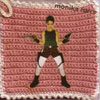 And while Chicks may sometimes appear capable onlyof recycling the past, Gut's accomplishments with Monika place heramong progressive artists never content to let nostalgia or pastreferentials guide their work. Hints of punk's subversive wit and DIYaesthetic enter the Monika sound, but the musicians seem lessinterested in countercultural rejection than in promoting reforms to aunifying pop language. Nearly all take advantage of the electronicmedium, but never as an end in itself, the computer never more than anelaborate editing desk, a treatment for whispered vocals, amplifier ofincidental melodies or siphon of city sounds. Monikans are almostuniformly female, urban and stylish without appealing to trends. Allmaintain a pop sensibility, though even the most twee (Figurine,Florida, Burka Band) are never so naïve that ironical detachment isrequired for their enjoyment. The sleek and minimal German electroniccode exists only as subtext for this music, its creators poised totease out quietly overwhelming melody and sundry pop eccentrics withenough ease and regularity to suggest that perhaps Monika shouldhead-up the Kompakt Pop Ambientseries so the title might gain some meaning outside of signifyingbeat-less microhouse throwaways. This is new and vital pop music,relevant in both past and present contexts. The archetypal Monika groupmight be Contriva, a trio that began as a subtle and melodic post-rockunit but, by the time of their first record Tell Me When, hadshifted within this basic structure to create a fragile and confidentinstrumental pop treasure, its musicianship still visible but findingtranscendence from studied post-rock-isms through the arrangement oftimeless and suggestive pop figures across an electronic song-line. Monika Forceis the label's second budget-priced sampler, special not only becauseit is a great label introduction (compiled by Gut herself) but alsobecause it compiles many of the marginally available remixes andvinyl-only tracks even a previous Monika enthusiast may not have on onedisc. Some of the label's best tracks like Manuela Krause + Pole's"Mein Freund de Baum" and Barbara Morgenstern's "Aus heiterem Himmel"are included here in their 12" and 7" mixes alongside newer classicslike Contriva bassist Masha Qrella's wonderful "I want you to know,"also in a b-side mix. Morgenstern, my favorite Monika artist, evenincludes an admittedly weak bonus video for her song "We're all gonnafucking die." In absolute justification of its title, Force is the prefect place to begin submission to the new Monika world order.
And while Chicks may sometimes appear capable onlyof recycling the past, Gut's accomplishments with Monika place heramong progressive artists never content to let nostalgia or pastreferentials guide their work. Hints of punk's subversive wit and DIYaesthetic enter the Monika sound, but the musicians seem lessinterested in countercultural rejection than in promoting reforms to aunifying pop language. Nearly all take advantage of the electronicmedium, but never as an end in itself, the computer never more than anelaborate editing desk, a treatment for whispered vocals, amplifier ofincidental melodies or siphon of city sounds. Monikans are almostuniformly female, urban and stylish without appealing to trends. Allmaintain a pop sensibility, though even the most twee (Figurine,Florida, Burka Band) are never so naïve that ironical detachment isrequired for their enjoyment. The sleek and minimal German electroniccode exists only as subtext for this music, its creators poised totease out quietly overwhelming melody and sundry pop eccentrics withenough ease and regularity to suggest that perhaps Monika shouldhead-up the Kompakt Pop Ambientseries so the title might gain some meaning outside of signifyingbeat-less microhouse throwaways. This is new and vital pop music,relevant in both past and present contexts. The archetypal Monika groupmight be Contriva, a trio that began as a subtle and melodic post-rockunit but, by the time of their first record Tell Me When, hadshifted within this basic structure to create a fragile and confidentinstrumental pop treasure, its musicianship still visible but findingtranscendence from studied post-rock-isms through the arrangement oftimeless and suggestive pop figures across an electronic song-line. Monika Forceis the label's second budget-priced sampler, special not only becauseit is a great label introduction (compiled by Gut herself) but alsobecause it compiles many of the marginally available remixes andvinyl-only tracks even a previous Monika enthusiast may not have on onedisc. Some of the label's best tracks like Manuela Krause + Pole's"Mein Freund de Baum" and Barbara Morgenstern's "Aus heiterem Himmel"are included here in their 12" and 7" mixes alongside newer classicslike Contriva bassist Masha Qrella's wonderful "I want you to know,"also in a b-side mix. Morgenstern, my favorite Monika artist, evenincludes an admittedly weak bonus video for her song "We're all gonnafucking die." In absolute justification of its title, Force is the prefect place to begin submission to the new Monika world order.samples:
- Masha Qrella - I want you to know (Tobi Higgs mix)
- Komëit - Parade
- Barbara Morgenstern - Aus heiterem Himmel (Dntel mix)
Read More
- Andrew Culler
- Albums and Singles
Monika
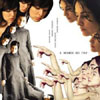 Each of these women not onlysounds like a brilliant new discovery, but each seems to both alongsidethe other three, but neatly within Monika's intimidating history. Theseare bedroom assemblages that beautifully support the title's rejectionof the solitary woman as locus for sentimentality or dependence. Allfour operate through the synthetic rearrangement and augmentation ofincredibly intimate recorded moments, be they hushed, after-hoursvocals, noodled guitar or nocturnal street and room ambience. Theresult is a very global sound, borrowing folk tropes from severalcultures (artists are Western and Eastern European and South American),weaving absurd post-modern fantasy tales, marshalling abstractpolitical statements, and dragging tense emotional ballads intoexpansive geographic space. Each artist contributes four to six tracks,within which each oscillates between more abstract cut-and-pasteselections and conventional hook-built songs, creating a successfuldynamic between potent atmosphere or sketchy ambience and charged popsongs that rival some of Monika's best. Rosario Bléfari and ÈglantineGouzy show particular mastery for microtonal percussion programmingcapable of piercing the music's small spaces, introducing the sounds ofthe street into a song's rhythmic milieu, or skittering around a smoothvocal. Despite the wealth of surrounding matter, the vocals do becomethe focal point for each artist's contribution; their voices so uniqueand expressive that they demand center stage, at least two of thempulling off Spanish and French rapped lyrics after crooning with nakeddelicacy in the previous tracks. Gouzy shuffles from creeky, Bjorkiannaïveté in "Nurse Song" to a complementary, provocative and playfulstyle in the obscure "Zone A." It's impossible to pick a favorite amongthese four artists, or to adequately represent even one of them in asound sample. Each is at once a great melody-maker and uncompromisedsculptor of diverse sounds, making this, my favorite compilation so farthis year, a hard first volume for Monika to top. - Andrew Culler
Each of these women not onlysounds like a brilliant new discovery, but each seems to both alongsidethe other three, but neatly within Monika's intimidating history. Theseare bedroom assemblages that beautifully support the title's rejectionof the solitary woman as locus for sentimentality or dependence. Allfour operate through the synthetic rearrangement and augmentation ofincredibly intimate recorded moments, be they hushed, after-hoursvocals, noodled guitar or nocturnal street and room ambience. Theresult is a very global sound, borrowing folk tropes from severalcultures (artists are Western and Eastern European and South American),weaving absurd post-modern fantasy tales, marshalling abstractpolitical statements, and dragging tense emotional ballads intoexpansive geographic space. Each artist contributes four to six tracks,within which each oscillates between more abstract cut-and-pasteselections and conventional hook-built songs, creating a successfuldynamic between potent atmosphere or sketchy ambience and charged popsongs that rival some of Monika's best. Rosario Bléfari and ÈglantineGouzy show particular mastery for microtonal percussion programmingcapable of piercing the music's small spaces, introducing the sounds ofthe street into a song's rhythmic milieu, or skittering around a smoothvocal. Despite the wealth of surrounding matter, the vocals do becomethe focal point for each artist's contribution; their voices so uniqueand expressive that they demand center stage, at least two of thempulling off Spanish and French rapped lyrics after crooning with nakeddelicacy in the previous tracks. Gouzy shuffles from creeky, Bjorkiannaïveté in "Nurse Song" to a complementary, provocative and playfulstyle in the obscure "Zone A." It's impossible to pick a favorite amongthese four artists, or to adequately represent even one of them in asound sample. Each is at once a great melody-maker and uncompromisedsculptor of diverse sounds, making this, my favorite compilation so farthis year, a hard first volume for Monika to top. - Andrew Cullersamples:
- Rosario Bléfari Partir y Rununciar
- Tusia Beridze Gorod
- Èglantine Gouzy Zone A
Read More
- Jonathan Dean
- Albums and Singles
Subliminal Sounds
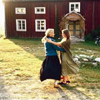 Amidsttheir infectiously mannered vocal harmonies (all in Swedish) andbackwards guitar symphonies, Dungen also interspersed unexpectedpassages of blistering acid guitar. Where Ta Det Lungt was a study in balance and dynamics, 1999-2001—Dungen'srarely heard first album, newly reissued on CD with bonus materials—isa far more untamed and problematic proposition. Made up of threelengthy tracks that each move through a number of jarring, Faust-stylemovements and rapid transitions, Dungen's debut is a mess, but aconsistently enjoyable one at that. Marked by its patchwork tendency tocrossfade into something quite different every few minutes, the albumfeels quite a bit hairier and proggier than its successors. In additionto the baroque psych-pop stylings familiar for the group, each track isalso chock full of odd passages of Jethro Tull flute solos,effects-heavy experiments in psychedelic ambience, free-form folkmeanderings, piano and slide-guitar duets and a myriad other musicalgestures too varied in their approach to encapsulate here. The overalleffect is of a group of talented musicians who couldn't decide howexactly to gel together and execute a single, coherent musicalstatement, so instead opted for maximum eclecticism, throwingeverything at the wall to see what would stick. As such, it's far froma satisfyingly conceptual whole, but other than that, it hardly makes awrong move for entire 18-minutes-plus length. The opening track startswith a recognizably Dungenesque vocal harmony backed by droningbackwards guitar, before fading into an extended instrumental jazz-rockpiece, a brief section of Comets On Fire-style synthesizer acrobatics,and a shimmering wall of drones with sampled birdsong. All of thisbefore the song has reached the halfway mark. A comparison could bemade with Xhol Caravan, who used similar tactics on their classicrandom radio-dial turning Motherfuckers GMBH. Like Xhol, Dungendon't seem to take themselves too seriously, juxtaposing breezy lightpsych-pop with third-eye sitar attacks, pausing every now and then foranother sunshine pop chorus. 1999-2001 is the kind of albumthat could very easily have digressed into turgidity and tedium, buthappily remains afloat as it coasts through a kaleidescopic variety ofwhimsical and hallucinogenic changes.
Amidsttheir infectiously mannered vocal harmonies (all in Swedish) andbackwards guitar symphonies, Dungen also interspersed unexpectedpassages of blistering acid guitar. Where Ta Det Lungt was a study in balance and dynamics, 1999-2001—Dungen'srarely heard first album, newly reissued on CD with bonus materials—isa far more untamed and problematic proposition. Made up of threelengthy tracks that each move through a number of jarring, Faust-stylemovements and rapid transitions, Dungen's debut is a mess, but aconsistently enjoyable one at that. Marked by its patchwork tendency tocrossfade into something quite different every few minutes, the albumfeels quite a bit hairier and proggier than its successors. In additionto the baroque psych-pop stylings familiar for the group, each track isalso chock full of odd passages of Jethro Tull flute solos,effects-heavy experiments in psychedelic ambience, free-form folkmeanderings, piano and slide-guitar duets and a myriad other musicalgestures too varied in their approach to encapsulate here. The overalleffect is of a group of talented musicians who couldn't decide howexactly to gel together and execute a single, coherent musicalstatement, so instead opted for maximum eclecticism, throwingeverything at the wall to see what would stick. As such, it's far froma satisfyingly conceptual whole, but other than that, it hardly makes awrong move for entire 18-minutes-plus length. The opening track startswith a recognizably Dungenesque vocal harmony backed by droningbackwards guitar, before fading into an extended instrumental jazz-rockpiece, a brief section of Comets On Fire-style synthesizer acrobatics,and a shimmering wall of drones with sampled birdsong. All of thisbefore the song has reached the halfway mark. A comparison could bemade with Xhol Caravan, who used similar tactics on their classicrandom radio-dial turning Motherfuckers GMBH. Like Xhol, Dungendon't seem to take themselves too seriously, juxtaposing breezy lightpsych-pop with third-eye sitar attacks, pausing every now and then foranother sunshine pop chorus. 1999-2001 is the kind of albumthat could very easily have digressed into turgidity and tedium, buthappily remains afloat as it coasts through a kaleidescopic variety ofwhimsical and hallucinogenic changes.samples:
Read More
- Administrator
- Albums and Singles
Secretly Canadian
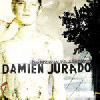 As aprelude to this album, Jurado released "Just in Time For Something," anEP which featured five songs of the most lo-fi, scratchy recordingquality possible. It was a beautiful listen, full of demo-qualitybrilliance and hearing it felt like being let into the songs at theirsynthetic moment of creation. Contrariwise, On My Way to Absenceis further down the evolutionary scale for Jurado's songs. Thearrangements are fuller, with pianos, drums, trumpets, strings, basses,and even a wandering glockenspiel. The recording is more technical,exhibiting none of the bedroom qualities so lush in the EP. If youlisten carefully enough, though, you can still hear the nascent stagesof the songs in their more mature versions here. Frustratingly, I findmyself doing this through most listens of the album because Iappreciate Jurado's songwriting without the adornment of addedinstruments around him and his guitar. For those with such low fidelityfidelity, Jurado rewards us with two songs ("Northbound" and "Fuel") ofpure man and guitar (though not sounding particularly lo-fi).Curiously, most of Jurado's spare songs lyrically have something to dowith automobiles, including songs from the EP (like "Engine Fire").Perhaps this is symptomatic for the musician who tours widely without adecadent or decent tour bus. My pickiness aside, there are some finesongs with full-band treatment. "Night Out For the Downer" is thesinuous tendon which connects both this album and the EP, having thefull-band version on the album and the acoustic version on the EP. Thesong actually succeeds here better than it does on the EP, which seemsto contradict a lot of what I have offered so far but I say it's theexception which proves the rule. Honestly, it might be the glockenspielwhich wins me over for the album version. The album's best effort isthe opener "White Center." In the verses, Jurado's voice pleasantly andplayfully mimics his guitar before giving way to the stringed choruses.The entire album is a mix of lullabies and gentle rockers, sometimesfurther hybridizing into Frankensteinian "rocking lullabies" like theinfectious "Simple Hello." In the liner notes, Jurado thanks hisproducer/engineer/bandmate Eric Fisher and claims "without you my songshave no life." I would disagree. Jurado's songs do indeed have lifewithout the complement of the studio. It's just a different life:smaller, more modest, and less apt to stumble with a torso too largefor its feet.
As aprelude to this album, Jurado released "Just in Time For Something," anEP which featured five songs of the most lo-fi, scratchy recordingquality possible. It was a beautiful listen, full of demo-qualitybrilliance and hearing it felt like being let into the songs at theirsynthetic moment of creation. Contrariwise, On My Way to Absenceis further down the evolutionary scale for Jurado's songs. Thearrangements are fuller, with pianos, drums, trumpets, strings, basses,and even a wandering glockenspiel. The recording is more technical,exhibiting none of the bedroom qualities so lush in the EP. If youlisten carefully enough, though, you can still hear the nascent stagesof the songs in their more mature versions here. Frustratingly, I findmyself doing this through most listens of the album because Iappreciate Jurado's songwriting without the adornment of addedinstruments around him and his guitar. For those with such low fidelityfidelity, Jurado rewards us with two songs ("Northbound" and "Fuel") ofpure man and guitar (though not sounding particularly lo-fi).Curiously, most of Jurado's spare songs lyrically have something to dowith automobiles, including songs from the EP (like "Engine Fire").Perhaps this is symptomatic for the musician who tours widely without adecadent or decent tour bus. My pickiness aside, there are some finesongs with full-band treatment. "Night Out For the Downer" is thesinuous tendon which connects both this album and the EP, having thefull-band version on the album and the acoustic version on the EP. Thesong actually succeeds here better than it does on the EP, which seemsto contradict a lot of what I have offered so far but I say it's theexception which proves the rule. Honestly, it might be the glockenspielwhich wins me over for the album version. The album's best effort isthe opener "White Center." In the verses, Jurado's voice pleasantly andplayfully mimics his guitar before giving way to the stringed choruses.The entire album is a mix of lullabies and gentle rockers, sometimesfurther hybridizing into Frankensteinian "rocking lullabies" like theinfectious "Simple Hello." In the liner notes, Jurado thanks hisproducer/engineer/bandmate Eric Fisher and claims "without you my songshave no life." I would disagree. Jurado's songs do indeed have lifewithout the complement of the studio. It's just a different life:smaller, more modest, and less apt to stumble with a torso too largefor its feet.samples:
Read More
- Administrator
- Albums and Singles
Warp Records
 The laid back, steady beats and charming sound swirlsof "Hide Ya Face" are ignited by the spit-fire commentary from MCsGhostface and El-P for some musical juxtaposition at its finest.Throbbing bass drum and downbeat handclaps support "Pastel Assassins"in its mix of sampled woodwinds and nylon string acoustic guitar alltopped with the gorgeous vocals of NYC sisters Claudia and AlejandraDeheza. Machine beats and sampled harp-pluckings form the backing trackof "Now You're Leaving," featuring the rhymes and soulful vocals ofBrooklyn MC/producer Camu. Based on a brief relationship, Camupoignantly sums it all up with the chorus of "Now we met / We kissed /You're breaking up / Now that's it / Now you leaving / Now I'm gonna bemiserable for the rest of my life." The full-length instrumental"Gratis" is the stand-out, deep groove and slick sample arrangementtrack that I've come to expect after hearing "Perverted Undertone" on ...Extinguisher.Herren skillfully blends trumpet and string section layers into themelodic element amidst treated Clavinet tones and beats for one of mymany favorite tracks on this disc. Now based in Barcelona, Herrenproduced much of these tracks in NYC for the convenience of tapping theMC community for its talents, although hints of Spanish influence(i.e., nylon string guitar, ethereal female vocals) seep into thesprawling urban mix. What I love about Prefuse 73 is how Herrencontinually manages to pursue and re-invent all the interesting facetsof his personal brand of hip hop without trying to re-do or out-do hisprevious discs. Currently touring North America, I'll be lookingforward to seeing if Herren and company can pull off tracks from Surrounded By Silence with style and conviction. Although, based on past live experiences, I have no doubts about it.
The laid back, steady beats and charming sound swirlsof "Hide Ya Face" are ignited by the spit-fire commentary from MCsGhostface and El-P for some musical juxtaposition at its finest.Throbbing bass drum and downbeat handclaps support "Pastel Assassins"in its mix of sampled woodwinds and nylon string acoustic guitar alltopped with the gorgeous vocals of NYC sisters Claudia and AlejandraDeheza. Machine beats and sampled harp-pluckings form the backing trackof "Now You're Leaving," featuring the rhymes and soulful vocals ofBrooklyn MC/producer Camu. Based on a brief relationship, Camupoignantly sums it all up with the chorus of "Now we met / We kissed /You're breaking up / Now that's it / Now you leaving / Now I'm gonna bemiserable for the rest of my life." The full-length instrumental"Gratis" is the stand-out, deep groove and slick sample arrangementtrack that I've come to expect after hearing "Perverted Undertone" on ...Extinguisher.Herren skillfully blends trumpet and string section layers into themelodic element amidst treated Clavinet tones and beats for one of mymany favorite tracks on this disc. Now based in Barcelona, Herrenproduced much of these tracks in NYC for the convenience of tapping theMC community for its talents, although hints of Spanish influence(i.e., nylon string guitar, ethereal female vocals) seep into thesprawling urban mix. What I love about Prefuse 73 is how Herrencontinually manages to pursue and re-invent all the interesting facetsof his personal brand of hip hop without trying to re-do or out-do hisprevious discs. Currently touring North America, I'll be lookingforward to seeing if Herren and company can pull off tracks from Surrounded By Silence with style and conviction. Although, based on past live experiences, I have no doubts about it.samples:
Read More
- Jim Siegel
- Albums and Singles
The Social Registry
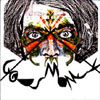 The more structuredsections many of these tracks feature is an improvement on theirearlier approach. This does not mean that the group has lost theirexperimental tendencies altogether, rather they now use these freeformtechniques to add depth and contrast to their new, more groove orienteddirection. This practice is especially effective during "Egowar." Afterfour minutes of trance-like rhythmic patterns with sparkly synthesizerflourishes, the song falls apart and the collective sound begins toresemble that of a volcano about to erupt. God's Money benefitsfrom a mixture of technical proficiency and the sort of risk-takingnormally associated with sound art. The group sounds like they've beeninspired by the more rhythmic and angular pop music from the lateseventies and early eighties, such as The Slits and Siouxsie and TheBanshees, without sounding like a retro tribute band. They insteadblend these influences with all sorts of ethnic rhythms and melodies tocome up with a sound that is unique and also sounds refreshinglymodern. Tim Dewitt's drumming is so solid and inventive that almostanything could sound good on top of it. His rhythms are so infectiousthat the simple synthesizer vamps played on dated equipment and LizziBougatsos's often shrill vocals can be overlooked. Her voice is theelement of Gang Gang Dance's sound that takes the most getting used to,and will understandably polarize opinion. While previously her vocalswere exclusively used as another abstract sound, the almost traditionalsong structure of tracks like "Glory in Itself" allow her to take amore traditional lead singer role. Several short instrumentals (titled"God's Money" parts I, V, VII, and IX) are interspersed throughout the40 minute set and add variety while providing thematic continuity."God's Money I (Percussion)" sets the tone with tribal drumming. "God'sMoney V" provides a mid-album instrumental rhythmic interlude, while"God's Money VII" is an atmospheric piece that begins with clouds ofkeyboard swells and concludes with electronics and skeletal beats."God's Money IX" finishes the album with loose drumming over similarkeyboard washes. With God's Money Gang Gang Dance has proved that all the meandering and experimenting of their earlier work has paid off.
The more structuredsections many of these tracks feature is an improvement on theirearlier approach. This does not mean that the group has lost theirexperimental tendencies altogether, rather they now use these freeformtechniques to add depth and contrast to their new, more groove orienteddirection. This practice is especially effective during "Egowar." Afterfour minutes of trance-like rhythmic patterns with sparkly synthesizerflourishes, the song falls apart and the collective sound begins toresemble that of a volcano about to erupt. God's Money benefitsfrom a mixture of technical proficiency and the sort of risk-takingnormally associated with sound art. The group sounds like they've beeninspired by the more rhythmic and angular pop music from the lateseventies and early eighties, such as The Slits and Siouxsie and TheBanshees, without sounding like a retro tribute band. They insteadblend these influences with all sorts of ethnic rhythms and melodies tocome up with a sound that is unique and also sounds refreshinglymodern. Tim Dewitt's drumming is so solid and inventive that almostanything could sound good on top of it. His rhythms are so infectiousthat the simple synthesizer vamps played on dated equipment and LizziBougatsos's often shrill vocals can be overlooked. Her voice is theelement of Gang Gang Dance's sound that takes the most getting used to,and will understandably polarize opinion. While previously her vocalswere exclusively used as another abstract sound, the almost traditionalsong structure of tracks like "Glory in Itself" allow her to take amore traditional lead singer role. Several short instrumentals (titled"God's Money" parts I, V, VII, and IX) are interspersed throughout the40 minute set and add variety while providing thematic continuity."God's Money I (Percussion)" sets the tone with tribal drumming. "God'sMoney V" provides a mid-album instrumental rhythmic interlude, while"God's Money VII" is an atmospheric piece that begins with clouds ofkeyboard swells and concludes with electronics and skeletal beats."God's Money IX" finishes the album with loose drumming over similarkeyboard washes. With God's Money Gang Gang Dance has proved that all the meandering and experimenting of their earlier work has paid off.samples:
Read More
- Administrator
- Albums and Singles
 Noticeably absent is their triple digit BPM tempos and quirky, eclecticcompositions which relied on the "programmer" element as an integralpart. Instead, the group have crafted seven stunning pieces that followa more straight-ahead instrumental rock feel, ridden with catchy hooks,radiant progressions, beautiful melodies and plenty of air-drummingfodder for those that choose to partake (myself included). From thefirst four bars of opener "All I Know is Tonight," the heroic rockelement falls perfectly into place, nicely embroidered with slidinghorns and snappy breaks that stop on a dime, leaving a twinklingxylophone to finish off melodic phrases. As with most great rockalbums, the first cut is the set-up 1-2 punch for track two; in thiscase, the over-the-top "Stardust Hotel." Power chords that would maketheir death metal countrymen proud are banged out on tremolo guitarmatched with snappy and polyrhythmic drumming kick the tune along as anoverly-distorted trumpet runs the melody. Not to balls-to-the-wall itfor the entire six minutes, a refreshing yet not so out-of-place turnwith a more orchestral taste tapers the tune off nicely. Seeing thegroup on their brief North American tour last summer, a then new andunfamiliar track which stood out in performance has become the trackthat warrants repeat listens in succession. Keyboard player AndreasHessen Schei's "Swedenborgske Rom" is a grandiose performance drawingheavily on the movements and arrangements of classical music scoring,all beautifully orchestrated. The full band's choir performance midwaythrough is evocative and very touching, bordering on celestial. Themusical chops of Jaga Jazzist's members quickly became apparent onprevious releases amidst their unique compositions and inspiringperformances. What We Must showcases the group's maturity ascomposers, arrangers and orchestrators, proving, once again, that thesum is greater than the individual parts.
Noticeably absent is their triple digit BPM tempos and quirky, eclecticcompositions which relied on the "programmer" element as an integralpart. Instead, the group have crafted seven stunning pieces that followa more straight-ahead instrumental rock feel, ridden with catchy hooks,radiant progressions, beautiful melodies and plenty of air-drummingfodder for those that choose to partake (myself included). From thefirst four bars of opener "All I Know is Tonight," the heroic rockelement falls perfectly into place, nicely embroidered with slidinghorns and snappy breaks that stop on a dime, leaving a twinklingxylophone to finish off melodic phrases. As with most great rockalbums, the first cut is the set-up 1-2 punch for track two; in thiscase, the over-the-top "Stardust Hotel." Power chords that would maketheir death metal countrymen proud are banged out on tremolo guitarmatched with snappy and polyrhythmic drumming kick the tune along as anoverly-distorted trumpet runs the melody. Not to balls-to-the-wall itfor the entire six minutes, a refreshing yet not so out-of-place turnwith a more orchestral taste tapers the tune off nicely. Seeing thegroup on their brief North American tour last summer, a then new andunfamiliar track which stood out in performance has become the trackthat warrants repeat listens in succession. Keyboard player AndreasHessen Schei's "Swedenborgske Rom" is a grandiose performance drawingheavily on the movements and arrangements of classical music scoring,all beautifully orchestrated. The full band's choir performance midwaythrough is evocative and very touching, bordering on celestial. Themusical chops of Jaga Jazzist's members quickly became apparent onprevious releases amidst their unique compositions and inspiringperformances. What We Must showcases the group's maturity ascomposers, arrangers and orchestrators, proving, once again, that thesum is greater than the individual parts.samples:
Read More
- Administrator
- Albums and Singles
Eastern Developments Music
 Somehow the trio (known to the world as M. Cretu, N. Gratin and O.Grouton) gained the attention of Berliner Jan Jelinek. A joint tourensued, which was noticed in turn by Prefuse 73, to whom we owe theexistence of Lost Recordings 2000-2004.Each of the eight tracks here have a unique and interesting history:the somewhat salacious and slinky "Collage of Digital Passion" and thegroovy downtempo "The Knack" were intended to accompany the televisionprograms "Abenteuer Forschung" (Adventure Research) and "ExtremeTravel," respectively; the maddeningly repetitive and mechanical loopcalled "A Machine Under Influence" was commissioned to be played atVolkswagen's Wolfsburg plant, with the thinking that such backgroundmusic would increase productivity. Lost Recordings's greatestvalue is its novelty: The Exposures have a long history in making musicin Germany—apparently it's heard on TV there all the time#151;and thisis the only collection of their music available on an album. Lost Recordingsare for the most part pleasant-sounding tunes, well-structured andformulated, and incorporating a variety of sounds, organic andincongruous alike. Still, The Exposures never rise above their jobs asbackground musicians on Lost Recordings. No one track is ableto distinguish itself above the rest: most feel half-finished, only avocal track or some creative sample away from being truly emotive orunique. The Lost Recordings are mostly blandly and boringlyinoffensive, feeling purely functional rather than soulful oremotional. Sort of like a Volkswagen, really.
Somehow the trio (known to the world as M. Cretu, N. Gratin and O.Grouton) gained the attention of Berliner Jan Jelinek. A joint tourensued, which was noticed in turn by Prefuse 73, to whom we owe theexistence of Lost Recordings 2000-2004.Each of the eight tracks here have a unique and interesting history:the somewhat salacious and slinky "Collage of Digital Passion" and thegroovy downtempo "The Knack" were intended to accompany the televisionprograms "Abenteuer Forschung" (Adventure Research) and "ExtremeTravel," respectively; the maddeningly repetitive and mechanical loopcalled "A Machine Under Influence" was commissioned to be played atVolkswagen's Wolfsburg plant, with the thinking that such backgroundmusic would increase productivity. Lost Recordings's greatestvalue is its novelty: The Exposures have a long history in making musicin Germany—apparently it's heard on TV there all the time#151;and thisis the only collection of their music available on an album. Lost Recordingsare for the most part pleasant-sounding tunes, well-structured andformulated, and incorporating a variety of sounds, organic andincongruous alike. Still, The Exposures never rise above their jobs asbackground musicians on Lost Recordings. No one track is ableto distinguish itself above the rest: most feel half-finished, only avocal track or some creative sample away from being truly emotive orunique. The Lost Recordings are mostly blandly and boringlyinoffensive, feeling purely functional rather than soulful oremotional. Sort of like a Volkswagen, really.samples:
Read More
- Lucas Schleicher
- Albums and Singles
Brainwashed
 "Dolorous Echo" is a ricocheting curve ofmetallic percussion and remarkable melodies built into and on top ofone another. It's cascading mass seems to fall in slow motion as thebeats slip and spin about, circling around the reversed and chimingsynthetic tones that float slowly away at every turn. There's a denselayering of rhythmic and harmonic elements on each second of the song;the flute-like whistle that's somehow surrounded by all the otherinstruments may not be noticeable at first, but it carries a certainimportance with it as it is pushed, pulled, and resituated in the mixthroughout the song. It's like being led through a maze at high speedover and over again, until nuances and details become clear out of purerepetition. Only Hawkins is messing with me at every lap of the maze,changing the smallest details for the best effect. "The Mast" is aslowly pulsing array of telephone tones, wooden blocks, and smoothbass. Hawkins' arrangement makes the song feel as though it isvibrating in and out of existence, the extended metallic drones and therhythms shimmering in unity so that the song feels like a flashing starof bass tones and rocking-chair keyboards. It's a relaxing littlenumber that contrasts perfectly with "Dolorous Echo." It's a good thingthat pre-orders of Otologycame with a CD that included this release because within another week'stime, I would've worn the grooves out of this 7" and have wanted areplacement desperately. This is an excellent place to start becomingfamiliar with Sybarite.
"Dolorous Echo" is a ricocheting curve ofmetallic percussion and remarkable melodies built into and on top ofone another. It's cascading mass seems to fall in slow motion as thebeats slip and spin about, circling around the reversed and chimingsynthetic tones that float slowly away at every turn. There's a denselayering of rhythmic and harmonic elements on each second of the song;the flute-like whistle that's somehow surrounded by all the otherinstruments may not be noticeable at first, but it carries a certainimportance with it as it is pushed, pulled, and resituated in the mixthroughout the song. It's like being led through a maze at high speedover and over again, until nuances and details become clear out of purerepetition. Only Hawkins is messing with me at every lap of the maze,changing the smallest details for the best effect. "The Mast" is aslowly pulsing array of telephone tones, wooden blocks, and smoothbass. Hawkins' arrangement makes the song feel as though it isvibrating in and out of existence, the extended metallic drones and therhythms shimmering in unity so that the song feels like a flashing starof bass tones and rocking-chair keyboards. It's a relaxing littlenumber that contrasts perfectly with "Dolorous Echo." It's a good thingthat pre-orders of Otologycame with a CD that included this release because within another week'stime, I would've worn the grooves out of this 7" and have wanted areplacement desperately. This is an excellent place to start becomingfamiliar with Sybarite.samples:
Read More

